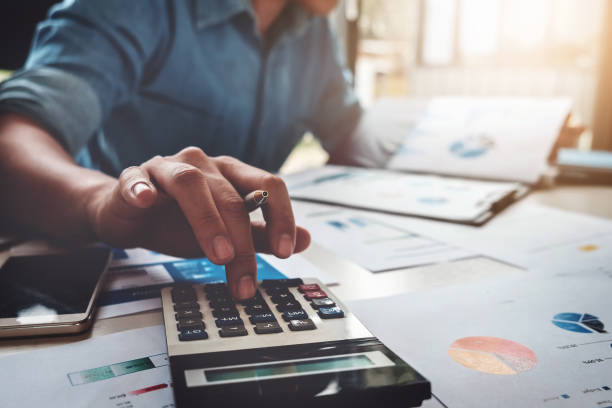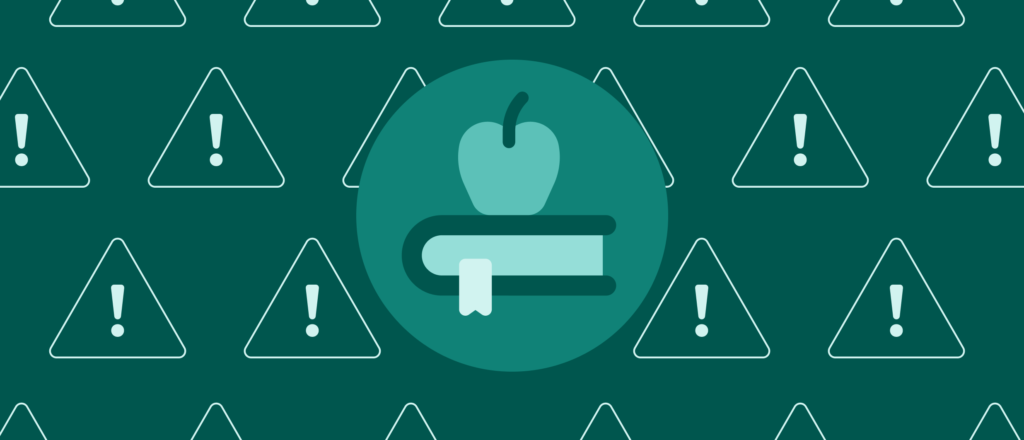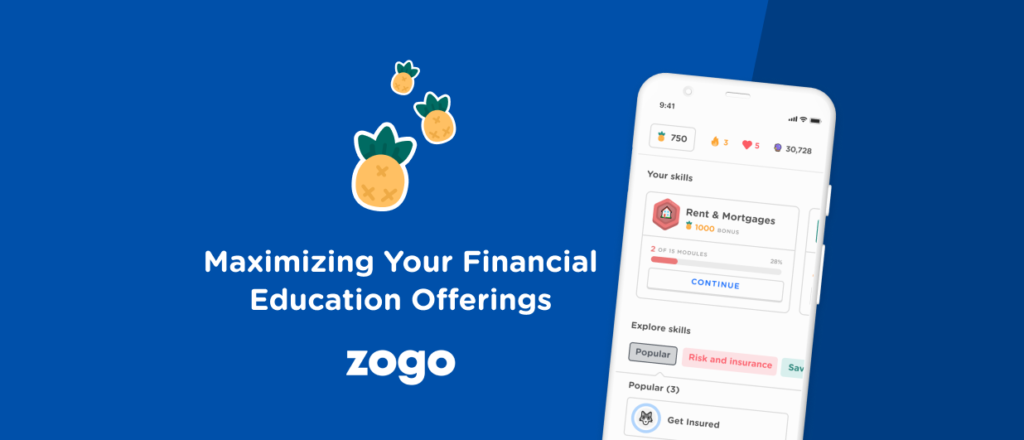Spending & Saving
Bank Accounts
There’s not much you can do without a bank account! There are several different kinds of bank accounts, and it’s important to know about each in order to determine which best suits your needs.
Deposit Accounts
A deposit account is a savings account, checking account, or any type of account that allows money to be deposited or withdrawn by the owner of the account. A deposit is a money transaction in which one party gives money to another party for safekeeping.
When a person makes a deposit in a financial institution, this money still belongs to her and she can withdraw the money at any time, transfer it to another person, or use the money for purchases.
A savings account is a type of deposit account. Savings accounts offer low interest rates. They are mainly used as a place to store cash for short-term needs or emergencies, since it can be easily spent without penalties. However, some financial institutions limit the amount of withdrawals and may charge fees if you don’t keep a certain amount in the account.
A checking account is another type of deposit account. Checking accounts are very liquid and can be accessed using ATMs, debit cards, checks, and more. Checking accounts allow for unlimited withdrawals and deposits, however, they offer extremely low interest rates (if any).
Opening a deposit account should take less than an hour: compare the interest rates, fees, etc. of different financial institutions; choose the one that meets your needs; gather your personal information, including your government-issued ID, SSN, and mailing address; open an account online or in-person; and put some money into the account!
Checking
A checking account is an account which allows you to complete daily transactions, withdrawals, and deposits. Checking accounts differ from other accounts in that they allow for multiple withdrawals and unlimited deposits, making it very easy to move your money in and out. Because of this, they usually do not offer a high interest rate.
Some financial institutions, like credit unions, offer free checking accounts. Many also offer joint checking accounts, in which two or more people can write checks on the account.
You can set up a checking account at a financial institution’s branch or on their website. Money can be deposited using ATMs, direct deposit, or by visiting a branch.
Remember not to go below your minimum balance! For checking accounts, the minimum balance is the minimum dollar amount you must have in the account. If your balance falls below the minimum, you may have to pay a fee, be denied interest payments, or your account might be closed.
If you make a purchase or write a check for more than you have in your checking account, your financial institution may allow the transaction to go through and cover the difference. This is called Overdraft Protection. However, you will also be charged an Overdraft Fee (around $30) every time you overspend from your checking account.
Many financial institutions offer checking accounts specifically for students.
Student Checking Accounts
College and high school students, this one’s for you guys, so listen up! Are you tired of using your parent’s debit card and paying them back, or being unable to access your own financial account? Enter: student checking accounts. If this isn’t one giant step toward adulthood, we don’t know what is.
Generally speaking, any college student is eligible to open a student checking account! They are designed to ease you into the responsibilities of personal finance with reduced fees and lower minimum balances. They’re also much more lenient with overdraws and missed payments, especially first offenses. Normal checking accounts are not so understanding!
Like with any checking account, student checking accounts offer a safe place to store your funds and spend them using a debit card. But there are also some special perks! These include discounts and cash back on typical expenses for students, like clothes and transportation. Some banks and credit unions might even let you apply for a student credit card, the first step in building your credit score!
Although banks and credit unions are a bit more forgiving toward college account holders, you still have to stay on top of your balance and any deadlines! The last thing you want is to develop bad habits that continue throughout adulthood and hurt your financial standing. You also don’t want the bank to freeze your account!
And just like that, you’ve graduated college! Boy, they grow up so fast. You will soon have to transition to a normal checking account (which doesn’t necessarily have to be through your previous bank or credit union). This means even greater accountability on your end, so hopefully the practices you developed using the student account will make the upgrade as seamless as possible.
Another special type of checking account is a joint checking account.
Joint Checking Accounts
Joint checking accounts are held by multiple people who each get access to any checks or debit cards connected to the account. Any owner of the account can make transactions without the other owner’s permission, so joint checking accounts are usually held by serious couples who share finances.
Like a personal account, you can apply for a joint checking account at your financial institution after providing Social Security numbers, photo ID, and other personal information for all account owners. But don’t feel forced to close your personal account right away! You can still keep your own account open for things like surprise gift purchases.
Joint checking accounts allow you and other owners to pool your funds for a higher account balance that may warrant additional benefits, such as waived fees and higher savings rates. Additionally, a joint account can serve the reverse purpose of a student account, where adult children can help manage their parents’ finances as they age.
A joint checking account should have few disadvantages, but it can have large drawbacks if you and your partner(s) are not transparent. One partner has the power to withdraw large chunks at at time, which can generate fees and debts towards all involved parties. Finally, withdrawals greater than $14,000 by a partner are taxable by the IRS.
In this lesson, we explored the uses of joint checking accounts and the pros and cons behind them. Other forms of shared accounts also exist, the most common of which are joint credit card accounts. These allow partners to share credit history and limits, something joint checking accounts do not offer.
Checking accounts offer you different options for spending your money.
Checks
Want to give someone money? You can write a check! A check is a slightly dated written instrument that directs the financial institution to pay a certain amount of money to someone else. Checks may be cashed or deposited, and the money is withdrawn from the account of the person who wrote the check.
Checks allow two or more parties to exchange money without the need for physical currency. They can be used to pay bills, as gifts, or to transfer money between two people.
When writing a check, make sure to write the date in the top right-hand corner. On the line that says, “Pay to the order of,” write the name of the person or company you want to pay. Next, write the payment amount in numbers and words. On the "Memo" line, write why you wrote the check. Finally, sign the check on the line at the bottom.
There are two ways to cash a check. The way people used to do it was to go to their financial institution. They had to bring their ID or debit card and "endorse" the check by signing their name on the line in the back and then hand it over physically to the teller. Nowadays, it’s (thankfully) much easier. Most financial institutions will allow you to just take a picture of the check through their app or upload it to their website to cash it! Just don’t forget to endorse it!
There are many different kinds of checks. A certified check verifies that the person writing it has enough money to pay the amount on the check. A cashier’s check is guaranteed by the person’s financial institution, which means the financial institution is responsible for that money. A payroll check is issued by an employer to an employee as compensation for their work.
Regardless of the way you choose to distribute your money, it’s crucial that you understand some key concepts related to having a bank account.
Overdraft
Overdraft occurs when the money withdrawn from a bank account exceeds the total amount of money available in the account. You can overdraw your account by overutilizing checks, ATM transactions, debit card purchases, automatic bill payments, and electronic or in-person withdrawals.
Many banks and credit unions offer overdraft protection programs in which the bank or credit union generally pays the transaction and charges you a fee/interest (in addition to requiring repayment of the overdraft amount). Typically, one should minimize usage of overdraft and ensure timely payment of any overdrawn funds.
Sometimes, the bank requires the account to be linked to another account, credit card, or line of credit, so that funds are moved from the linked account to cover the overdraft. This is called overdraft protection. The account holder may be charged an additional fee every month that protection is used or a fixed monthly fee for continuous protection.
The bank will charge overdraft fees even if your own money is covering the shortfall. Also, in the case of an overdraft line of credit, you’ll have to pay interest on the amount you borrow until you pay it back. At many banks, overdraft fees are between $30 -$35, so be sure to understand your account terms when setting one up!
When it comes to transferring money between accounts, there are a few options. One particularly convenient option is an electronic fund transfer, or EFT.
EFTs
An Electronic Fund Transfer (EFT) is the virtual transfer of money from one bank account to another. This can occur within the same bank or across different banks. There is no direct intervention of staff and it’s usually done over an EFT system/network.
Electronic Fund Transfers are important as they reduce the need for paper documentation. Instead, invoices and payments are all electronically captured. Additionally, since the transfer takes place out of the major credit card systems like Mastercard, Visa, or Discovery, the charge on a transaction is little to none.
The Electronic Fund Transfer industry began in the 1960s with ATMs. Since then, countless merchants, vendors, government agencies, and even individuals use EFT networks to send and receive money. An EFT network facilitates a transaction whenever debit cards, direct bank deposits, or e-Transfers are used.
The Electronic Fund Transfer Act (EFTA) is a federal law that was passed to protect consumers when they engage with Electronic Fund Transfers. The EFTA established rules that defined the rights and responsibilities of all participants involved in transferring funds electronically.
Whenever you use your debit card to buy groceries at your local grocery store, the transaction is processed over an EFT system. Money is deducted from your checking account and sent to the grocer. This is similar to how an ATM would function, or how you might send money through your online checking account.
As was earlier stated, the first EFT was the ATM, or automatic teller machine.
ATMs
An ATM, or Automated Teller Machine, is an electronic machine that allows people to withdraw cash from their checking accounts. Some ATMs, especially those owned by the bank that holds your account, will also accept deposits. Make sure to have an ATM card or debit card handy so you can access your account through an ATM!
Believe it or not, most of your grandparents couldn’t access an ATM growing up! The first ATM opened in London in 1967, when the inventor John Shepherd-Barron wanted to create "a vending machine to dispense cash." Three years later, ATMs began accepting personal identification numbers, or PINs, for users, which would verify the cardholder’s identity and revolutionized personal consumer banking.
ATMs have made life incredibly convenient, but be careful which ATM you choose. Beware of ATMs on the side of the road or in poorly lit locations, as these are more often targeted by thieves. Always take caution when inputting your pin into an ATM. Cover the pad while using it so that your code isn’t picked up by hidden cameras!
When you use an ATM not operated by your bank, your bank may charge you a "non-network fee," and you will not be notified of this fee at any time during your transaction. Also, the ATM operator itself may charge you a fee, and international transactions will typically incur an additional charge.
Fortunately, there are banking networks that help you avoid ATM fees! The CO-OP Shared Branching Network is a partnership involving over 1800 different credit unions. Customers of partnered unions can thus carry out transactions without a surcharge at the ATMs or branches of other credit unions in the network.
Having a bank account comes with a great deal of responsibility, and you’ll need to acquire a few key skills.
Reconciling
If you have a checking account you will periodically receive a printed record of your account balance (every month or quarter), called a statement. Your statement will include every deposit and withdrawal you have made from your account.
Save your receipts and check your credit card account online regularly to track your expenses and stay on top of your spending. Some people find it helpful to keep a ledger, or record of every past transaction.
It is important to reconcile your checking account. This means you should compare your statement with your receipts and make sure the transactions on the statement match what you remember spending.
Reconciling your checking account is a good idea because it allows you to catch errors and possibly spot fraudulent activity. You should perform a reconciliation every month when your statement arrives.
If charges show up on your statement that do not look familiar, contact your financial institution immediately to clear up the problem.
Reconciling is just one part of account management.
Account Management
Most financial institutions offer online banking along with other wealth management services, such as asset management and portfolio analysis and monitoring. These services can help you manage your account to grow your wealth and meet your financial goals.
One of the easiest ways to manage your checking account is to automate your finances! You can set up Bill Pay to pay your monthly bills automatically from your checking account. You can also set up Direct Deposit to automatically deposit paychecks into your checking account. Thank you, technology! Nevertheless, be sure to continue monitoring your accounts to ensure that your balance never gets too low.
Many financial institutions hire asset managers to improve your investments. Asset managers conduct research to find lucrative investments that will make their client more money.
Many financial institutions also offer portfolio management. Portfolio managers will find a balance between the riskiness of an investment and the investment’s expected financial return to craft a portfolio that seeks to minimize volatility while beating the market’s returns. These services are usually offered for high net-worth individuals or institutions.
A wealth management advisor is a professional who combines financial services in order to address the needs of their client. For example, they might provide financial and investment advice, as well as accounting and tax services. If you don’t want to seek multiple different professionals for advice, a wealth management advisor can help provide a holistic approach to managing your money.
Takeaways
Bank accounts are increasingly convenient ways to safeguard and distribute your money. Still, don’t get too comfortable! Always pay attention to your accounts to make sure that they align with your spending history as well as your financial goals.
 Trusted by over 200 institutions in all 50 states!
Trusted by over 200 institutions in all 50 states!

 Meet the team
Meet the team Mobile App
Mobile App Integrations
Integrations Classroom
Classroom Blog
Blog Press
Press Case Studies
Case Studies Webinars
Webinars Learn
Learn
 Careers
Careers


